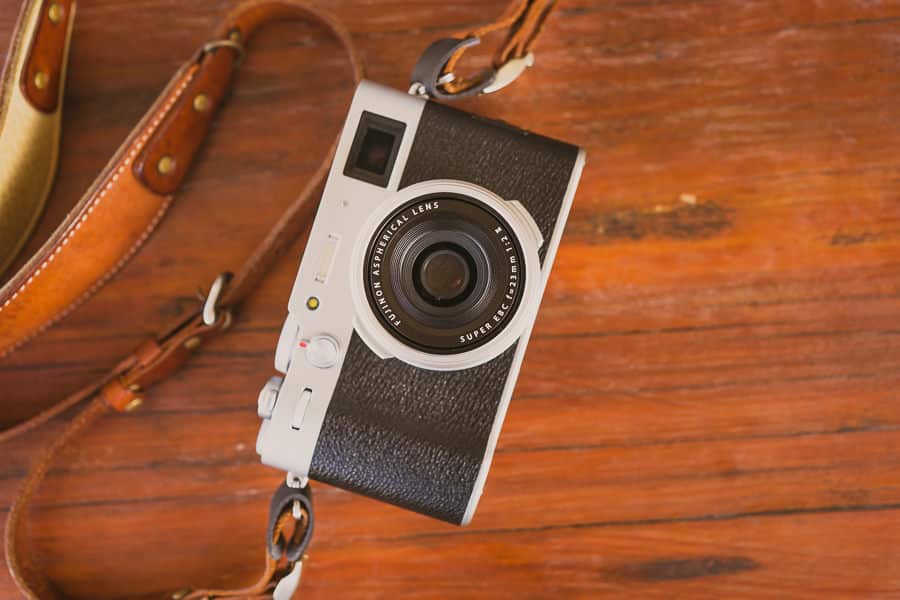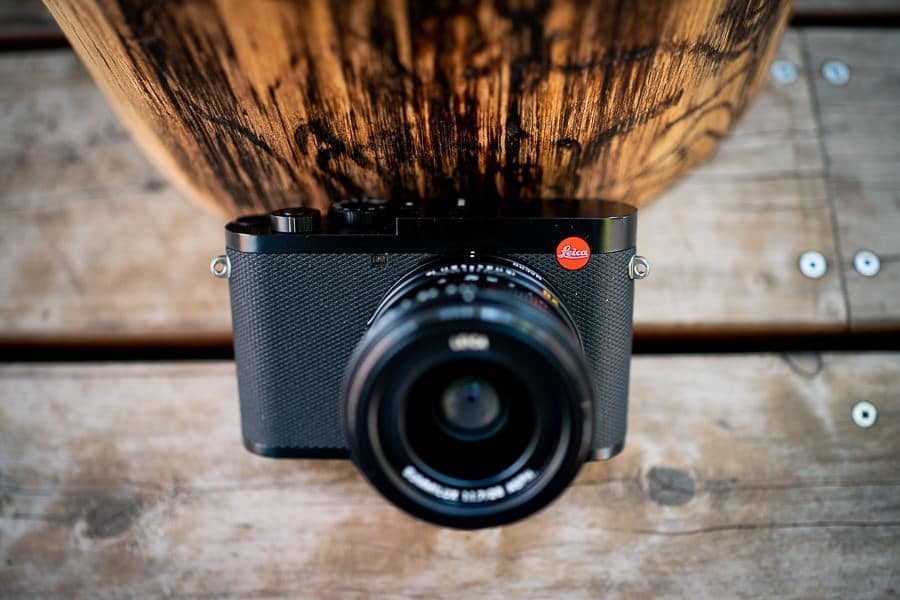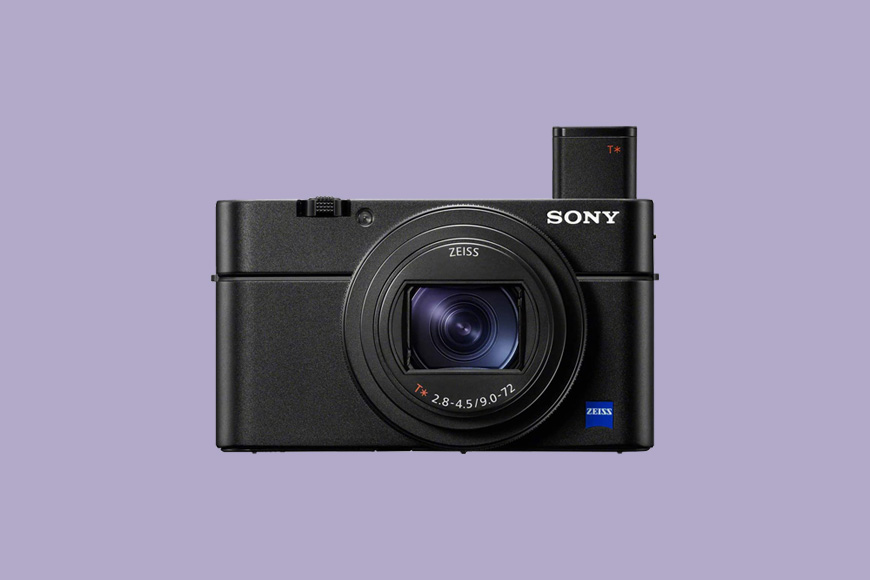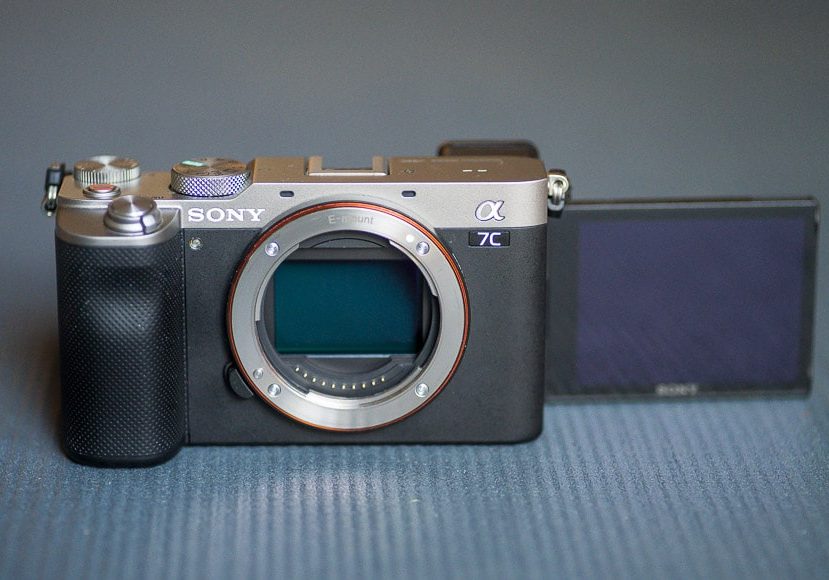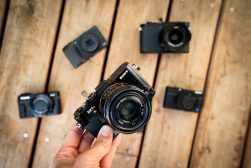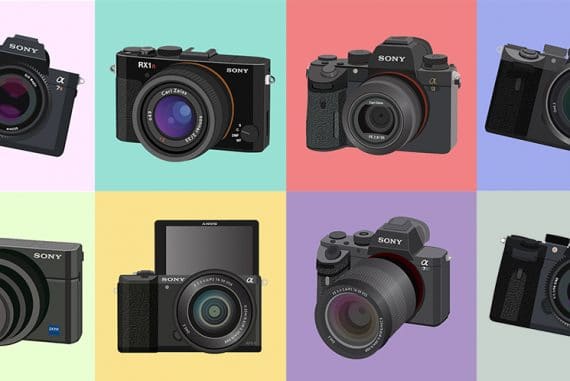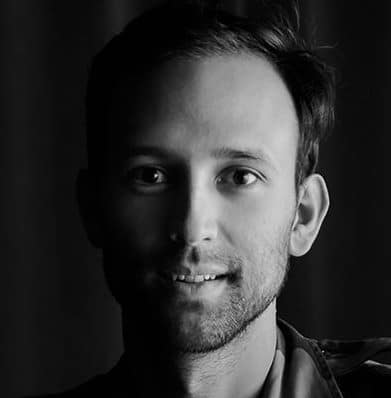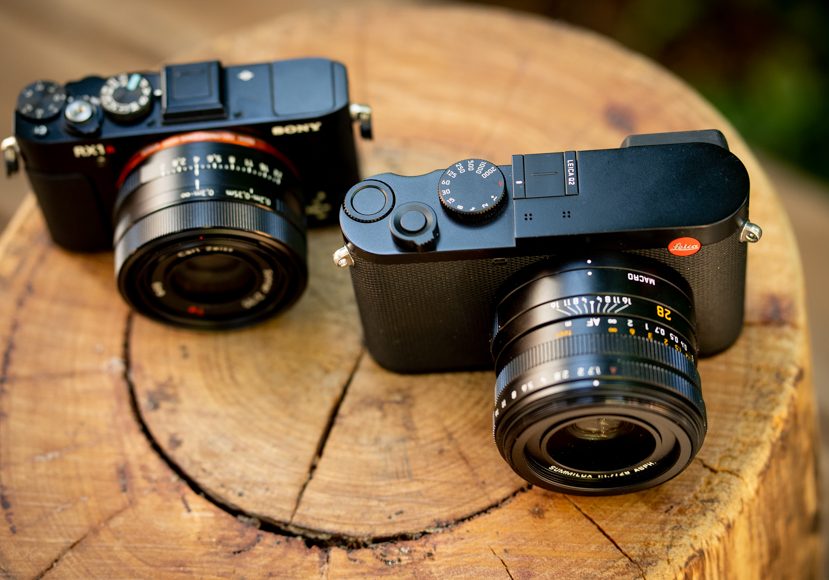
Best Compact Cameras with a Viewfinder in 2023
Compact cameras are a great tool, especially those with a viewfinder which allows you to compose your photos like you're using a DSLR or mirrorless camera.
I’m glad you’re looking for a compact camera with a viewfinder – they’re definitely my favourite way to take photos.
Although taking pics using the rear LCD is convenient, it just doesn’t feel like you’re as involved with the process.
Cameras with a viewfinder, whether electronic or optical (or hybrid), really immerse you in the art of photography.
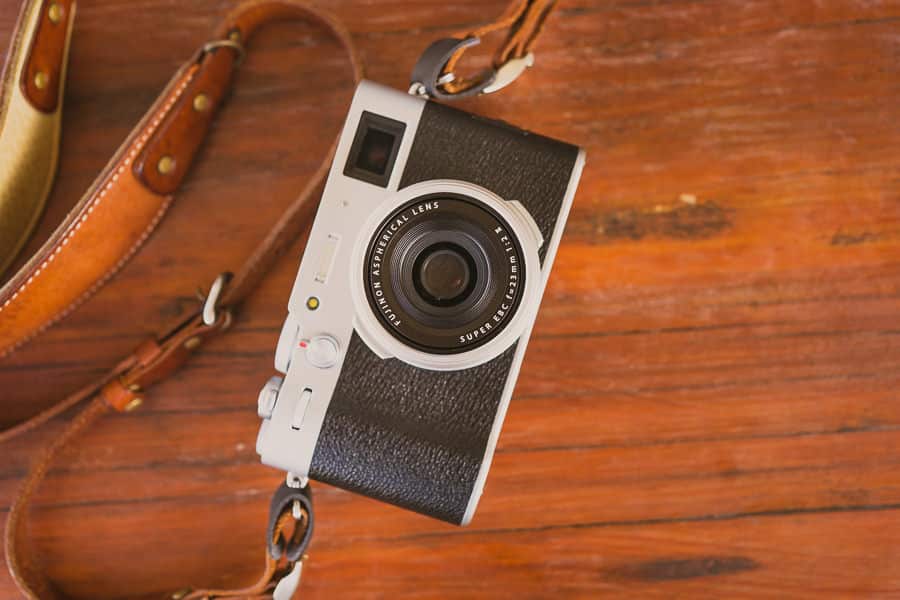
Unique hybrid optical & electronic viewfinder provides best of both worlds in a gorgeous retro-style camera body with excellent image quality.
They’re also handy when the sun’s particularly bright, making it much more likely that you can see your scene.
An electronic viewfinder has the additional benefit of showing you all the essential camera settings as you compose your shot.
Let’s take a look at the best compact cameras which have a viewfinder
(You should also check our guide to compact cameras.)
Table of Contents
What is the Best Camera with a Viewfinder in 2023?
| Image | Product | Features | |
|---|---|---|---|
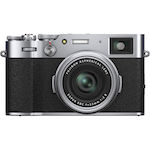 | Fujifilm X100V OUR #1 CHOICE |
| Check AMAZON Price → Check B&H Price → |
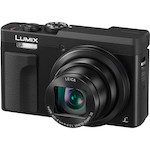 | Panasonic LUMIX DC ZS70KBEST BUDGET |
| Check AMAZON Price → Check B&H Price → |
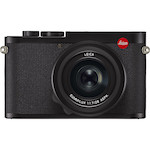 | Leica Q2BEST PREMIUM |
| Check AMAZON Price → Check B&H Price → |
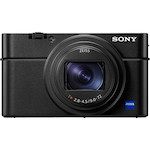 | Sony Cybershot RX100 VIIBEST ZOOM |
| Check AMAZON Price → Check B&H Price → |
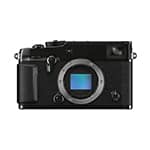 | Fujifilm X-Pro3BEST INTERCHANGEABLE LENS |
| CHECK AMAZON PRICE → |
 | Sony a7CBEST FULL FRAME |
| Check AMAZON Price → Check B&H Price → |
Fujifilm X100V (Best AllRound Compact Camera with Electronic Viewfinder)
- Unique hybrid electronic + optical viewfinder
- Great RAW & JPEG image quality
- Excellent autofocus capabilities
- Lens is high-quality and sharp
- Weather-resistant
- Has a tilt-screen
- Beautiful film simulations
- Hard to find in stock
- Poor ergonimics for big hands
This is my best overall choice for a camera with an EVF, the Fujifilm X100V.
All of Fuji’s X100 series compact cameras have a viewfinder, and the V is the latest and greatest model.
The X100V has a unique feature – the hybrid optical (OVF) and electronic (EVF) viewfinder.
This allows you to switch between the two kinds of viewfinder for completely different shooting experiences.
While the OVF gives you the old-school feel of shooting directly through the viewfinder, the EVF on the Fuji X100V shows you a preview of what you’ll actually get, in the same way that modern DSLR or mirrorless cameras do.
But it’s not all about the viewfinder. This is also a great performing camera in a good-looking body.
With a design inspired by and based on an old rangefinder camera body, it’s minimalist sleek, retro-inspired and has manual control dials – for shutter speed, ISO, and exposure compensation – that are nicely incorporated into the overall form factor.
It also comes with a redesigned lens, which at 23mm (35mm full-frame equivalent), is a comfortable point-of-view and focal length for everyday shooting.
The lens has Fuji’s much-loved aperture ring and, at f/2 is fast, and ideal for shooting in low light and creating bokeh. It’s razor-sharp, too, with fantastic contrast and colours.
Panasonic LUMIX DC ZS70K (Best Budget Compact Camera with Viewfinder)
- Affordable
- Can shoot 4K video
- Sturdy build
- Image stabilization
- Pocketable size
- Optically adjustable viewfinder
- Flippable LCD screen
- Menu can be a little awkward to navigate
- Poor ergonomics
This is an affordable option for anyone looking for the best point-and-shoot cameras with a viewfinder.
Many compact cameras of this size don’t have a viewfinder at all. You need to use the rear screen for everything.
But this is often no good in shooting conditions with bright light, for example, outdoors, hiking, one of many of the situations you’d want a compact camera for.
So, the fact that the Panasonic LUMIX DC ZS70K has a viewfinder, and one that is optically adjustable, makes it much more versatile than many of its competitors.
Having said that, it does also have a rear screen that takes up most of the back of the device. At 3 inches, it’s big enough to help you navigate the menu and play with your settings.
It can also flip 180 degrees, so it’s super handy for vloggers and selfie lovers and have a 30x zoom lens, making it one of my favourite zoom cameras to take on holiday.
One of this camera’s outstanding features is that it can shoot 4K video (at 30 fps). Many of Panasonic’s competitors would only offer 1080p at this price range.
And good news for those thinking of using this camera for video. Its in-built image stabilization works very well, even with the lens fully extended to 30x magnification.
Leica Q2 (Best Premium Compact Camera with Viewfinder)
- Robust yet beautiful design
- Fully weather sealed
- Outstanding image quality
- Minimalistic
- Great feeling grippy body
- Limited 28mm focal length
- Not the best video performance
- Expensive
The Leica Q2 is a premium compact camera at an eye-watering price. Strictly for those who want to treat themselves.
But of course, as you’d expect from Leica, if you do shell out the cash you’ll be getting a beautiful piece of equipment, both in terms of looks and performance.
It’s a full-frame camera based around a 47.3 megapixel CMOS sensor, and has a built-in 28mm Summilux f/1.7 lens; that is – this is not an interchangeable lens.
The lens itself, if you bought it separately, would cost you the same amount as the Leica Q2. So some argue that fact alone justifies the price. In a way, you’re getting one of the two (the lens or the body) for free.
The lens is super sharp and has a good focal length for all-around use. Paired with Leica’s famous colour rendering and incredible image quality, it’s a winning package.
As something you’ll want to carry around a lot, a compact camera must also be robust. And the Leica Q2 certainly is.
It’s fully weather-sealed, and the metal body can take some knocks. As for the viewfinder, it’s a bright and spacious feeling EVF that refreshes quickly.
And the Leica Q2 is not just tough, but pretty too. It has an ergonomic design and beautiful flowing lines.
There’s also extreme attention to detail, for example, the perfectly machined lens cap and hood, and the macro ring on the lens which slides back to reveal the adjusted focus scale.
Sure, the Q3 is now available, but it’s also more expensive – you should be able to pick up a used Q2 for much less.
Overall, the Leica Qs are definitely not the best compact cameras for those on a tight budget, but if you want something special and have the funds, there’s really nothing else like them.
Sony Cybershot RX100 VII (Best Compact Cameras with Viewfinder on Top)
- Versatile focal-lengths
- Great video performance
- Excellent autofocus
- Pocketable point and shoot
- Unique pop-out viewfinder
- No built-in ND filter
- Shutter button is a little over-sensitive
- Poor ergonomics (no grip)
Sony’s RX100 series is a well-respected part of the compact camera market.
Like its predecessors (down to the RX100 III), it has a pop-up viewfinder on top of the camera, which is really helpful for shooting on bright days.
It has a Zeiss lens with a focal length of 24-200mm and an aperture of f/2.8 to f/4.5.
Although that’s not going to give you premium low-light performance, it will give you a decent amount of range and versatility to keep you happy in most situations.
Its standout features, though, are in its improved video capabilities.
It has great autofocus and tracking (similar in performance to the Sony a9) and allows you to shoot blackout-free at up to 20 fps. Active Steadyshot gives you great image stabilization too.
It’s easy to use and has a sleek form factor, making it one of the best compact cameras for taking out in your pocket every day.
The pop-up viewfinder really is a unique touch you don’t see on many other compact cameras, especially ones of this size.
Fujifilm X-Pro3 (Best Inter-Changeable Lens Compact Camera with Viewfinder)
- Fun to use
- Classic look and feel
- Can use with interchangeable lenses
- Excellent image quality
- Unique ‘hideable’ rear LCD screen
- Tons of great Fuji lenses to choose from
- Small hybrid viewfinder system is not to everyone’s tastes
The Fujifilm X-Pro3 is my choice as the best interchangeable lens pocketable camera with a viewfinder for four reasons.
First, like the Fuji X100V, the Fujifilm X-Pro 3 has Fuji’s unique hybrid viewfinder system, which gives users new options and versatility in the way they shoot.
Opt for the optical viewfinder and you’ll be shooting in the same way as you would with an old rangefinder.
Secondly, with its ‘hidden’ LCD screen, the X-Pro 3 forces you to use the viewfinder to compose your images.
Sure, it flips down, but it’s easier to not use it than to use it. Mostly it’s better to keep it where it is, and you can just concentrate on shooting, not constantly checking your shots.
So if you’re looking to slow down, get back to photography basics and the film-camera-like pure enjoyment of the craft, this could be the device for you.
Thirdly, it has a beautiful retro-camera look to it. With the manual dials and the part titanium body, it really looks as if it could come from another era.
Finally, Fuji has done a great job with the classic film stock filters that you can apply in-camera. Meaning, that if you want your photos to have that retro look too, you may not even have to do any post-processing at all.
As for the modern things, well, the X-Pro 3 has very similar specs to the XT-4. A 26-megapixel crop sensor, the same autofocus system and the same lens mount, so you can use this body with the rest of Fuji’s X system lenses.
Oh, and one final plus of the X-Pro 3 is that it gives you access to all the wonderful Fujinon glass which is available.
Sony a7C (Best Full Frame Compact Camera with Viewfinder)
- Robust build
- Great feel in the hand
- Good battery life
- Outstanding autofocus
- Of the few truly compact full-frame cameras
- ISO control is not intuitive to use
- Using the Sony menu system can be a chore
- Small viewfinder
It’s great to shoot with a full-frame camera in a compact body.
You get all the premium features of a much heftier, much more expensive camera. You get the feel of shooting with one thanks to the viewfinder. And you get it all in a package that’s lighter and more fun to use.
So what does it have?
A massive ISO range that can have you shooting up to over 200000 ISO, which will give you incredible low-light capabilities.
A 24-megapixel sensor, and lightning-fast real-time tracking and eye-tracking autofocus.
It also has a crazy-fast shutter, able to shoot 115 RAW images at 10 fps, and a fully-articulating rear screen to help you get those super low- or high-angle perspectives that the viewfinder won’t let you cover.
The video performance is not too shabby either, especially when paired with one of the great lenses for the Sony a7c.
You can record in 4K up to 30fps, and get slow-motion footage of up to 120fps if you drop down to 1080p.
Plus with that great autofocus I already mentioned, coupled with the Sony’s in-built image stabilization, your footage is going to be sharp.
Unfortunately, despite having an EVF which functions well, I found it much too small in testing to be comfortable for long-term use – taking photos with the rear LCD is a much more pleasurable experience.
Overall, Sony a7Cs are great all-round compact cameras for the avid street or travel photographer who wants professional-level images or footage.
They’re compact enough to shove in a small bag and carry anywhere while packing in the kind of features and specifications you wouldn’t normally expect from something of this size.
The only other semi-pocketable full framer at the time of writing is the Sonyu RX1R (pictured at the top of this guide), which is outdated and over-priced.
What is the Benefit of a Viewfinder on a Camera?

On most DSLR cameras, the viewfinder sits at the top | Ana Mireles
Personally, I love using the viewfinder (EVF) on my Fuji X100V – the main advantage for me is the ability to see things even in the harsh midday sun here in Byron Bay.
There are other benefits of viewfinders on cameras, but also some potential drawbacks too:
| Benefits | Downsides |
|---|---|
| Improved Stability: Using a viewfinder allows you to brace the camera against your face, leading to increased stability and fewer blurred photos. | Added Bulk: A viewfinder, especially an optical one, can add to the size and weight of a compact camera, making it less portable. |
| Efficient in Bright Light: Viewfinders are excellent for shooting in bright sunlight where an LCD screen might be washed out and hard to see. | Limited Coverage: Some viewfinders, particularly optical ones, might not show the entire scene that the lens will capture, leading to unwanted elements in the shot. |
| Battery Savings : Using the viewfinder instead of the LCD screen can save battery life since it consumes less power. | Additional Cost: Cameras with viewfinders often come at a higher price point compared to those without. |
| Professional Feel: For many, using a viewfinder feels more professional and can improve focus on the shot. | Limited Availability: Few compact digital cameras include a viewfinder, which limits your options if this feature is important to you. |
| Easier Focus: Viewfinders can help you to better focus on the details of your image, which can be helpful in situations like macro or portrait photography. | Inaccurate Framing: For cameras with separate viewfinders and lenses (rangefinder-style cameras), what you see through the viewfinder may not match exactly what the lens captures. |
Above all, most digital cameras which have a viewfinder also have a rear LCD screen too.
This means that there’s really no disadvantage to getting a small camera with a viewfinder, as you can use either.
What are the Disadvantages of an Electronic Viewfinder?

EVFs show you a live view of the image in front of your lens | Ana Mireles
Electronic viewfinders can be a great way to see additional camera information while shooting.
They also give a WYSIWYG view of the scene, making exposure adjustments much easier, leading to less chimping.
I love the EVF on my Sony a7III, but I have to admit to using the rear LCD more since it shows the same information as the EVF in a bigger size.
Here are 5 downsides to using an electronic viewfinder:
- Lag: There may be a slight delay in displaying the image, especially in low-light situations or when panning quickly.
- Battery Consumption: EVFs use more power than optical viewfinders, which can decrease battery life.
- Image Quality: While improving, EVFs may not accurately represent colour, contrast, or brightness as an optical viewfinder can.
- Resolution: The resolution of an EVF may not match the final image, making it challenging to judge focus and fine details.
- Refresh Rate: Some EVFs can struggle with fast-moving subjects due to lower refresh rates.
What are some popular mirrorless cameras which have viewfinders?
- Canon
- EOS R3
- EOS R5
- EOS R6
- EOS RP
- EOS M50 Mark II
- EOS M6 Mark II
- EOS M200
- EOS M5
- EOS M100
- EOS M1
- Nikon
- Z 9
- Z 7 II
- Z 6 II
- Z 5
- Z fc
- Z 30
- Z 50
- Z 1
- Sony
- A1
- A7R IV
- A7R III
- A7R II
- A7 III
- A7 II
- A7C
- A6600
- A6400
- A6100
- A7S III
- A7S II
- A7S
- RX100 VII
- RX100 VI
- RX100 V
- Fujifilm
- X-T5
- X-T4
- X-T3
- X-T30 II
- X-S10
- X-E4
- X-A7 IV
- X-T200
- X-T100
- X-T2
- X-T1
- X-Pro3
- X-Pro2
- X-Pro1
- X100V
- X100F
- X100T
- X100S
- Olympus
- OM-1
- OM-D E-M1X
- OM-D E-M1 Mark III
- OM-D E-M1 Mark II
- OM-D E-M5 Mark III
- OM-D E-M5 Mark II
- OM-D E-M10 Mark IV
- OM-D E-M10 Mark III
- OM-D E-M10 Mark II
- PEN E-PL10
- PEN E-PL9
- PEN E-PL8
- Panasonic
- GH6
- GH5 II
- GH5
- G9
- GX9
- GX85
- GX80
- LX100 II
- LX100
- FZ1000 II
- FZ2500
- FZ300
Note that this isn’t an exhaustive list of the best mirrorless cameras, but it should give you some idea of the number of digital cameras which have a viewfinder.

Unique hybrid optical & electronic viewfinder provides best of both worlds in a gorgeous retro-style camera body with excellent image quality.





